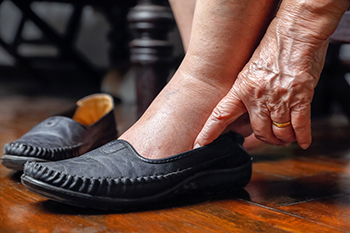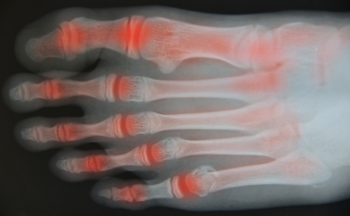
Anyone who is active physically on a regular basis is a prime candidate for stress fractures. Among the main causes of these hairline cracks in a bone are changing your workout program, improper footwear, and improper technique. Going from running on turf to running on a road or other hard surface also may put you at risk. High-impact sports, such as soccer, running, basketball and dance, increase the likelihood of sustaining stress fractures. Non-athletes can also develop stress fractures, usually by increasing activity after refraining for a long time. Having osteoporosis and vitamin D deficiency, especially common among postmenopausal women, is another risk factor. If you have sustained stress fractures in the past, you are more likely to experience them again. If you suspect you may have developed stress fractures in your feet, it is a good idea to consult a podiatrist who can conduct a thorough examination and offer appropriate treatment options to reduce your pain.
Stress fractures occur when there is a tiny crack within a bone. To learn more, contact one of our podiatrists from Community Foot Specialists. Our doctors can provide the care you need to keep you pain free and on your feet.
How Are They Caused?
Stress fractures are the result of repetitive force being placed on the bone. Since the lower leg and feet often carry most of the body’s weight, stress fractures are likely to occur in these areas. If you rush into a new exercise, you are more likely to develop a stress fracture since you are starting too much, too soon. Pain resulting from stress fractures may go unnoticed at first, however it may start to worsen over time.
Risk Factors
- Gender – They are more commonly found in women compared to men.
- Foot Problems – People with unusual arches in their feet are more likely to develop stress fractures.
- Certain Sports – Dancers, gymnasts, tennis players, runners, and basketball players are more likely to develop stress fractures.
- Lack of Nutrients – A lack of vitamin D and calcium may weaken the bones and make you more prone to stress fractures
- Weak Bones – Osteoporosis can weaken the bones therefore resulting in stress fractures
Stress fractures do not always heal properly, so it is important that you seek help from a podiatrist if you suspect you may have one. Ignoring your stress fracture may cause it to worsen, and you may develop chronic pain as well as additional fractures.
If you have any questions, please feel free to contact our offices located in Beavercreek, Dayton, and Vandalia, OH . We offer the newest diagnostic and treatment technologies for all your foot care needs.




